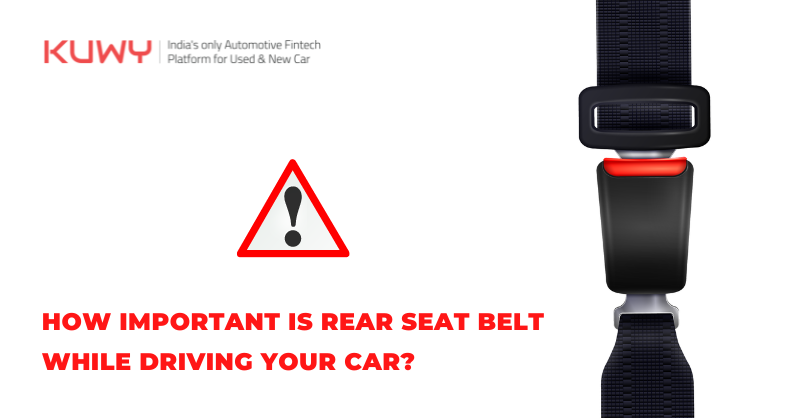Buckle up your seats, please! Fastening your seat belts, especially for four-wheelers is highly recommended. Do you know why? Well, we are here to learn its importance. Many cases encountered fatal accidents due to not wearing the rear seat belt while driving. At the same time, rear seat belts have become life saviors during the event of a frontal crash.
Before drenching in the idea of buying a car, be prepared to follow all the safety precautions to save yourself from a disaster. It's vital to delve into the safety features as much as the price bracket you are going after. Even basic safety equipment can sometimes make the difference between life and death. The awareness of wearing a rear seat belt has increased over the past years.
The survey involved adults of 18 years and above from June to August last year and concluded that out of 1,172, only 72 percent agreed they also use their seat belt at the rear which is contrary to the 91 percent regularly buckling up in the front. Cyrus Mistry's death was an accident due to not wearing the rear seat belt, which has led to a discussion on the necessity of seat belts while traveling in a car.
In this article, let's learn the importance of a rear seat belt while driving a car. Let's check on a few points that uphold the importance of seat belts.
5 Points that indicate the importance of a rear seat belt
- According to Central Motor Vehicle Rules (CMVR), wearing a seat belt is mandatory for a passenger sitting in the rear seat. According to Rule 138 (3) of CMVR, persons "seated in the front seat or the persons occupying front facing rear seats" must wear seat belts while the vehicle is in motion. The government has given a provision in the motor vehicle rules to impose a fine of ₹ 1,000 for those violating the seat belt rule.
- According to WHO, the use of rear seat belts can prevent fatality by 25 percent, and also prevent excess injury or death for the front seat passenger.
- Earlier this year, Minister for Road Transport and Highways Nitin Gadkari said that all seats in a car will be required to have a "three-point" or Y-shaped seat belt, including middle-rear seats.
- The three-point belt has been chosen because, in case of a collision, it spreads out the energy of the moving body over the chest, pelvis, and shoulders.
- Wearing a seat belt while sitting in the rear seat can help reduce the chances of fatal injuries. In case of a collision, an unbuckled passenger will be pushed forward to collide with the front seat or even the dashboard.
What does Data say?
- Data published by National Crime Records Bureau has revealed that road accidents claimed the lives of 1.55 lakh people across India in 2021 on an average of 426 lives or 18 lives every hour.
- This is the highest death figure recorded in any calendar year so far. Besides, 3.71 lakh people were also injured in 4.03 lakh road accidents across the country last year.
- According to a World Health Organization (WHO) report in June, seat belts can reduce death and serious injuries to passengers in the rear seat of a car by 25 percent.
- “Wearing a seatbelt reduces the risk of death among drivers and front seat occupants by 45 - 50 percent, and the risk of death and serious injuries among rear seat occupants by 25 percent,” the WHO report stated.
Conclusion
Now Government imposed Rs.1000 as a penalty if the seat belt is not used by the passengers. Adding to it, the vehicle will also be seized with a driving license. However, the penalty varies from state to state.
To learn more about cars, follow Kuwy by downloading the Kuwy app.
Happy Learning!!




